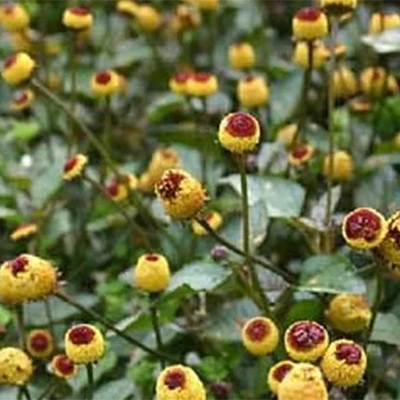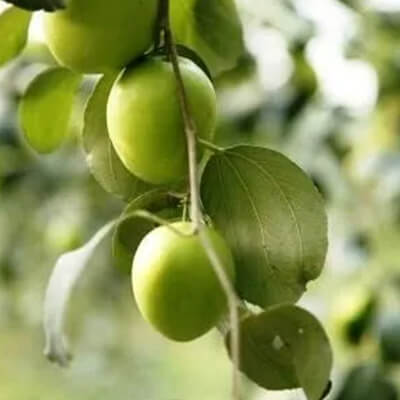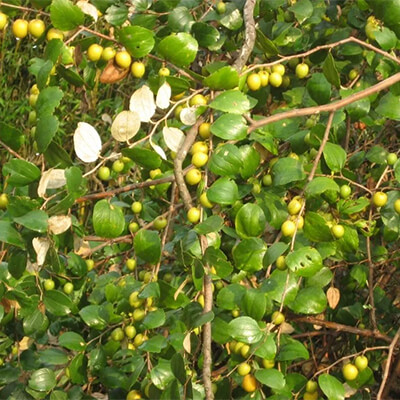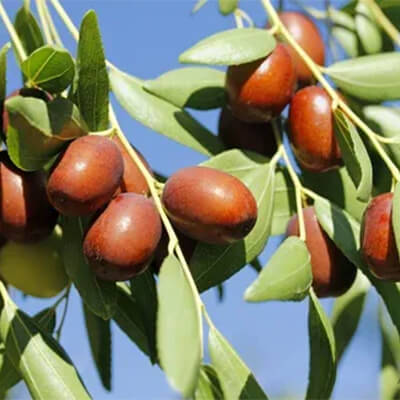On This Page
Akarakarabha – The Excellent Herb for the Disease of the Oral Cavity
Introduction
Akarakarabha botanically known as Anacyclus pyrethrum DC is a herb that is most commonly found in the Mediterranean area. Spilanthus acmella or Spilanthus calva Linn. is cultivated by certain farmers such as Akarakarabha. In ancient times few countries around the world are familiar with Akarakarabha like North Africa, Algeria, etc. Akarakarabha plant is native to North Africa. In Ayurvedic classical texts, Akarakarabha is not mentioned in Brihtrayi. Akarakarabha was mentioned in Gada Nigreha by Shodhala Nighantu. In BhavaPrakasha Nighantu it has been mentioned as Vrishya i.e., Aphrodisiac. The special factor about Akarakarabha is that this plant doesn’t lose its potency for 7 years. It consists of the active principle anacyclic due to which it acts as an oral contraceptive. Along with this Akarakarabha is found to have excellent anti-inflammatory activity, antidepressant activity, memory-enhancing activity, Immune stimulating activity, abortifacient, etc in recent research. Due to all these activities, Akarakarabha is used in various disorders like phlegmatic disease, joint pain, weakness of the body, stomatitis, constipation, ascites, etc.
Basonym of Akarakarabha
आकार अभिप्राय अनुरूप चेष्टा विष्करणम |
करभ करे भाति शोभते इति वा करभ |
When the plant Akarakarabha (Anacyclus pyrethrum DC) is picked in hand it looks attractive and when used it cures many diseases.
Synonyms of Akarakarabha
- आकल्लक – An attractive plant used in many diseases.
- अरकरभ – It is an attractive plant.
- आकारकरा – When held in hand it looks attractive.
Regional Names of Akarakarabha
- Pellitory roots, Mount atlas, Daisy Spanish chamomile (English)
- Akaraka (Hindi)
- Akkalakara (Kannada)
- Akkikkaruka (Malayalam)
- Akarkara (Marathi)
- Akkorakaro (Gujarati)
- Akarkarah, Akarkara (Bengali)
- Akiekaram (Tamil)
- Akarkaram (Telugu)
- Aqarqarha (Unani)
Botanical Name
Anacyclus pyrethrum DC
Anacyclus word is derived from two words ‘Ana’ means like and ‘Kyklos’ means circle.
Pyrethrum word is derived from two words ‘pyr’ meaning fire and having a pungent taste.
Family
Asteraceae (Bhringraja Kula)
Ayurveda Reference for Akarakarabha (Anacyclus pyrethrum DC.)
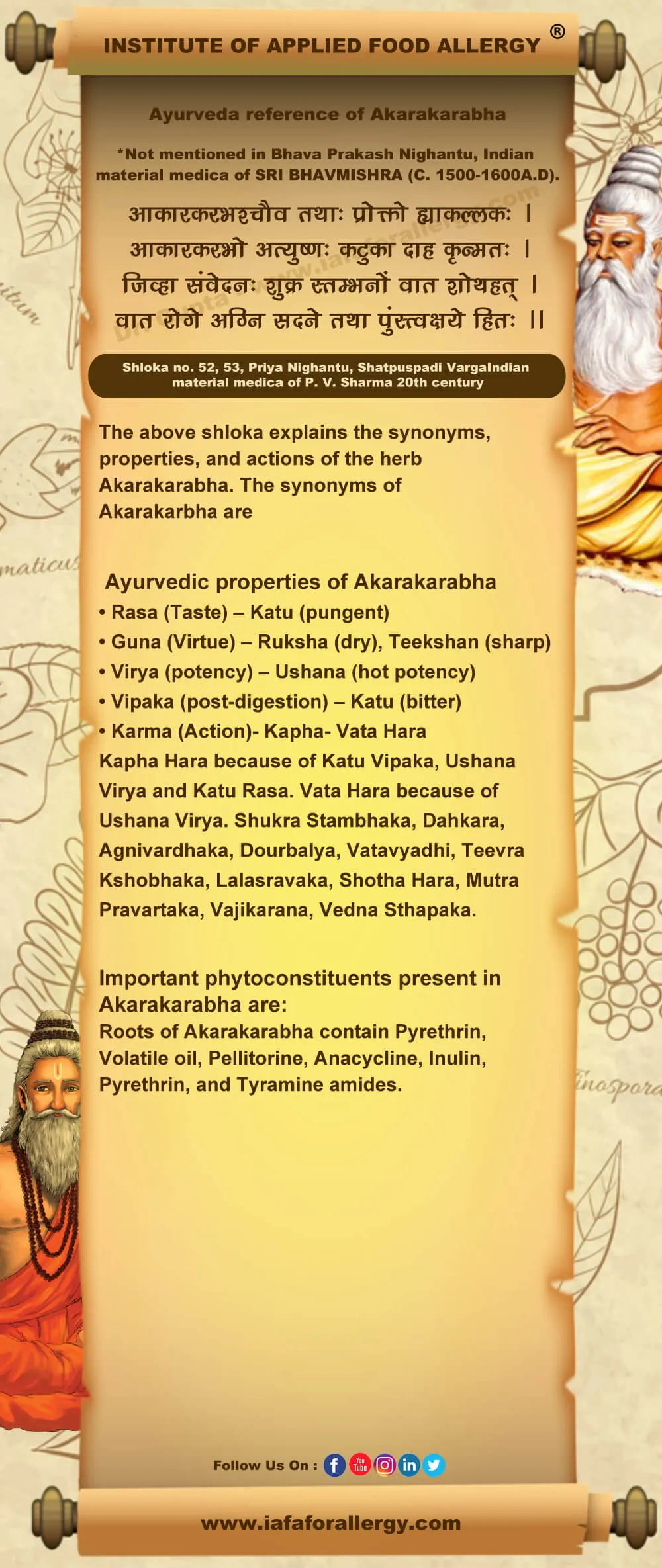
Scientific Classification of Akarakarabha
| Kingdom | Plantae |
| Class | Dicotyledons |
| Subclass | Gamopetalae |
| Series | Inferae |
| Order | Asterales |
| Family | Asteraceae |
| Genus | Anacyclus |
| Species | pyrethrum |
Classification of Akarakarabha as per Charaka and Sushruta
- Charaka: Not mentioned in Mahakshaya
- Sushruta: Not mentioned in Gana
Akarakarabha’s Description in Brihtrayi
Not mentioned in Bhritrayi
Historical Background of Akarakarabha
It is a hairy shrub possessing white or yellow flowers. It is mainly cultivated in the northern part of India. This plant is native to North Africa when it was introduced to Southern Europe. George Wall reported that its tooth is mainly collected in Algeria and sent for trade. It entered India through Muslim rulers/traders. Sodhala mentioned it as ‘Akallaka’ in Gadanigraha for the first time. At present Spilanthes acmella Murr, and Spilanthes calva DC. are being cultivated innocently by sure farmers thinking that it is the original Akarakarabha.
External Morphology of Anacyclus pyrethrum
- Habit: Akarakarabha is an annual, erect, or ascending hairy herb.
- Stem: The stem of Akarakarabha is Hairy and herbaceous.
- Leaf: Leaves are simple, opposite, 2 to 5 cm long, 1 to 4 cm wide, and ovate. irregular crenate or serrate, glabrous, petioles are up to 1.5 cm long.
- Inflorescence: head inflorescence is present in Akarakarabha, 1 to 1.5 cm long.
- Flower: Flowers of Akarakarabha are very small and yellow, Ray flowers are often absent.
- Fruit: Achene, oblong or obovoid and compressed.
Flowering and fruiting time
Summer season and onwards.
Adulteration
Anacyclus officinarum is used as an adulterant of Anacyclus pyrethrum.
Substitute
- Spilanthus acmella
- Spilanthus calva
- Anacyclus depressus
Several species of Spilanthes, both wild and introduced ones such as Spilanthus paniculara Wall. ex DC., Spilanthus calva DC., Spilanthus oleracea Murr. (introduced) etc., bearing the same local names and uses are often confused with Anacyclus pyrethrum. The flower heads of Spilanthes species exhibit maximum hot burning taste and tingling sensation on the tongue, causing profuse salivation like that of Anacyclus root.
*In the Unani system of medicine Darr fulfill (Piper longum), Pudeenaha (Mentha pipretha) is considered as a substitute for Aqarqarha (Anacyclus pyrethrum).
Distribution of Akarakarabha
Anacyclus pyrethrum is found wild in the Mediterranean region and is cultivated in North Africa. The Pellitory root is imported from India.
The Useful Part of Akarakarabha
Root
Dried Akarakara root is almost cylindrical, slightly twisted, and tapering downwards. It is generally crowned with a tuft of |hair, brownish and fissured on the outside with shining black markings. The fracture is short presenting a radiate structure and numerous oleoresin glands. The taste is pungent with a slight odor.
Important Phytoconstituent of Akarakarabha
Roots of Akarakarabha contain Pyrethrin, Volatile oil, Pellitorine, Anacycline, Inulin, Pyrethrin, and Tyramine amides.
Recent Research on Akarakarabha
- A study was done to evaluate the effect of Anacyclus pyrethrum on normal and chemically suppressed immune systems in vivo. Immunostimulant activity increased two-fold upon doubling the dosage of extract administered. Significant improvement was observed in the humoral component and a highly significant effect was observed in the cellular components of the immunity. The results thus provide a basis for the use of Anacyclus pyrethrum as an adaptogen and immunomodulator in the Ayurvedic system of medicine. Sharma V, Thakur M, Chauhan NS & Dixit VK. Immunomodulatory activity of petroleum, another extract of Anacyclus pyrethrum. Pharm Biol. 2010 Nov; 48 (11):1247-54.
- A study was done to evaluate the neuropharmacological profile of the Anacyclus pyrethrum. In this study, the CNS activity of ethanolic extract of Akarakarbha was done to evaluate the sedative effect, muscle relaxant effect, nootropic activity, and antidepressant activity on rats. The study reveals potential nootropic and antidepressant activity of Anacyclus pyrethrum in rats. Sujith, K., Suba, V., & Darwin, C.R. (2011). Neuro Pharmacological profile of ethanolic extract of Anacyclus pyrethrum in albino Wistar rats.
- A study on Akarakarabha was done to evaluate the antipyretic activity. First, the pyrexia was induced in rats by using intra- peritoneally yeast 1ml/ kg. After that, the ethanolic extract of Akarakarabha in dosage of 1000 mg/ kg is introduced intra- peritoneally. This study revealed that Anacyclus pyrethrum extract was very comparable to the paracetamol that is the standard drug. In this study, the acute study was also carried out on Anacyclus pyrethrum and its maximum lethal dosage was found i.e., 2g/ kg. Dc, P., & Kirtania, P. (2014). Study of Antipyretic activity of the ethanolic extract in Anacyclus.
- A study was conducted on the Anacyclus pyrethrum to evaluate the aphrodisiac and reproductive activity. Aqueous extract of roots of Akarakarabha was used for evaluation. In rats, the fructose level of seminal vesicles was recorded. After using aqueous extract of roots on albino rats it was found that the fructose level, as well as sperm count, is significantly increased. Improvement in sexual behavior of albino rats was also found. Sharma, V., Thakur, M., Chauhan, N.S., & Dixit, V.K. (2009). Evaluation of the Anabolic, Aphrodisiac, and Reproductive Activity of Anacyclus Pyrethrum DC in Male Rats. Scientia Pharmaceutica, 77, 97-110.
- Anti-inflammatory activity
- Abortifacient
- Antioxidant activity
- Immuno- stimulating activity
- Rubefacient activity
- Antidepressant activity
- Memory enhancing activity
Rasa Panchaka of Akarakarabha
| Rasa (Taste) | Katu (Pungent) |
| Guna (Virtue) | Ruksha (Dry), Teekshana (Sharp) |
| Virya (Potency) | Ushana (Hot Potency) |
| Vipaka (Post-Digestion) | Katu (Pungent) |
Dosha Karma of Akarakarabha
Kapha – Vata Shamaka
Kapha Hara because of Katu Vipaka, Ushana Virya, and Katu, Rasa.
Vata Hara because of Ushana Virya.
Karma (Actions) of Akarakarabha
Shukra Stambhaka, Dahkara, Agnivardhaka, Dourbalya, Vatavyadhi, Teevra Kshobhaka, Lalasravaka, Shotha Hara, Mutra Pravartaka, Vajikarana, Vedna Sthapaka.
Prayogarha Vyadhi (Therapeutic indication) of Akarakarabha
- Abhyantra Paryoga (Internal indication): Apasmara, Paksaghata, Kampavata Amavata, Samanya Nadidaurbalya, Agnimandya- Pittaksaya, Hridya Daurbalya, Sotha Phiranga, Kapha Janya Kasa, Kantha Vikara- Svarabheda, Prameha, Dhvaja Bhanga, Daurbalya- Samanya.
- Bahya Paryoga (External indication): Paksaghata, Nadi Daurbalya, Danta Krimi, Dantashoola, Danta Roga, Mukha Roga, Kanthasaluka, Vidradhi Pinasa- Pratisyaya, Napunsakata.
Aamyik Paryog (Therapeutic Uses) of Akarakarabha
- Phirang Roga (Syphilis): Parada (½ tola= 6 grams), Khadirasara (1/2 tola), Akarakarabha (1 Tola) and honey (1/2 Tola) are to be mixed and made into seven pills. These pills are to be administered in the dose of one pill a day with water to cure Phirang Roga. The individual should avoid taking food consisting of salt and sour tastes. (Bhava Prakasha Samhita Chikitsa s\Sthana. 59/ 15)
Traditional External Uses of Akarakarabha
- Dantasula (Toothache): Powder of root of Akarakarabha (Anacyclus pyrethrum) and Karpura (Cinnamomum camphora) is used as tooth powder in case of Dantasula (Toothache).
- Akarakarabha is used with oil for massage in hemiplegia and nervous debility.
- Decoction of Akarakarabha root is used for gargling in dental caries, and tonsillitis.
- Akarakarabha is used externally for Darana and assimilation. Akarakarabha on application makes the skin red and boils occur.
- On external application, Akarakarabha is used to treat Shool (as it has analgesic properties).
- Its Nasya is given for chronic rhinitis and cold.
- In the Unani system of medicine, Akarakarabha is used to prepare various aphrodisiac formulations.
Traditional Internal Uses of Akarakarabha
- Apasmara (Epilepsy): Kwatha (Decoction) of Akarakarabha (Anacyclus pyrethrum) and Brahmi (Bacopa monnieri) is very efficacious in Apasmara (Epilepsy).
- Various Vataja disorders are treated by internal use of Akarakarabha.
- A small dose of Akarakarabha acts as an appetite stimulant in indigestion and Pittakshaya.
- It increases heart rate.
- Akarakarabha plays important role in curing inflammatory diseases and STDs (sexually transmitted diseases).
- Useful in cough and hoarseness of voice. It is also used in children like the Acorus calamus.
- It is useful in diabetes.
- Akarakarabha is very useful in Avrishyata (impotency) caused by weakness of nerves.
- In Kaphaja disorders, Akarakarabha is used as a rejuvenator (Rasayana).
Benefits of Akarakarabha
- Loss of Libido: Akarakarabha influences the secretion of androgens and also increases the production of androgen due to its spermatogenic action, libido stimulant, and aphrodisiac properties. The main active ingredient present in Akarakarabha is alkylamine, which stimulates the hypothalamus, and ultimately helps to increase the production of testosterone. As per Ayurvedic classical texts, Akarakarabha increases the blood supply to the genitals and acts as a libido stimulant due to its Vrishya property.
- Common cold: Akarakarabha’s antiviral properties help alleviate nasal congestion and reduce common cold symptoms.
- Epilepsy: Akarakarabha exhibits muscle relaxant activity and anticonvulsant activity which helps to cure epilepsy.
- Arthritis: As per Ayurvedic classical texts Arthritis occurs due to aggravation of Vata Dosha. Akarakarabha with its Vata balancing properties helps to cure shotha (inflammation) and Pain (shool) in arthritis. As per recent research, Akarakarabha has antioxidant properties which help to improve blood circulation and manage inflammation and pain in arthritis.
- CAS (Childhood apraxia of speech): It is a disorder in which speech muscles don’t perform normally because the brain has difficulty coordinating the movements due to which children have difficulty in accurate movement while speaking. Akarakarabha acts as a brain and nervous tonic that helps in treating CAS but slowly.
- Anxiety and stress: Akarakarabha has potent anti-depressant and adaptogenic properties which helps to treat different types of psychotic disorder like stress and anxiety.
- Diabetes: Akarakarabha exhibits an anti-diabetic effect which helps to bring down the spiked blood glucose level.
- Allergy from Akarakarabha
The people who are sensitive to daisies, chrysanthemums, marigolds, etc may be allergic to Akarakarabha. So use Akarakarabha under medical supervision if you are allergic to the Asteraceae family.
Effect of Akarakarabha on Different Systems of Bodies
- Reproductive system: Akarakarabha helps in improving sexual potential in males as it possesses the androgenic potential and also enhances spermatogenesis.
- Central nervous system: Akarakarabha exhibits anti-epileptic and anti-convulsant activity. It also protects from cognitive impairment by reducing oxidative stress due to its antioxidant activity.
- Endocrine system: It helps to treat diabetes due to its anti-diabetic activity.
Matra (Therapeutic Administration and Dosage) of Akarakarabha
- Mula Churna (root powder): 0.5 to 1 mg

Have A Health Issue?
Consult Online
- Dr. Sahil Gupta (B.A.M.S., M.H.A.)
Ayurvedic Allergy Specialist
CEO & Founder of IAFA®
Classical Reference of Akarakarabha
Priya Nighantu Shatpushpadi Varga- 52
Synonyms
आकारकरभश्चैव तथा: प्रोक्तो ह्याकल्लक: ।
आकारकरभो अत्युष्ण: कटुका दाह कृन्मतः |
Priya Nighantu Shatpushpadi Varga- 52- 53
Properties and action
जिव्हा संवेदनः शुक्र स्तम्भनों वात शोथहत् |
वात रोगे अग्नि सदने तथा पुंस्त्वक्षये हितः ||
Nighantu Ratnakara
अकलल्क कोष्णो वीर्येण बल कृत् कटु कोमतः |
प्रतिश्याय च शोथम च वातं चैव विनाशयेत् ||
Bhava Prakasha Samhita Chikitsa sthana. 59/ 15
रतिवर्द्धनार्थ आकरकरभादि वटी
आकरकरभ: शुण्ठी लवङ्ग कुंकुम कणा |
जातीफलं जातिपुष्पं चन्दन कार्षिक पृथक ||
चूर्णयेद अहिफेनन्तु तत्र दद्यात्पलोन्मितम् |
सर्वमेकीकृत माषमात्रं क्षौद्रेण भक्षयेत् ||
Shodhala Nighnatu
अकल्लक वीर्येण बलकृत् कटु कोमतः |
प्रतिश्याय च शोथम च वातं चैव विनाशयेत् |
Specific Formulation of Akarakarabha
- Akarakarabhadi Churna for Kleibya
- Akarakarabhadi Vati for Kleibya
- Saptasali Vati for Phiranga
- Dantamanjana Churna
- Shveta Kusthahara Churnam
- Akarakarabhadi Avleha
- Chopchinyadi Churna
- Kumaraya Aasava
Contraindication and Side Effects of Akarakarabha
- Due to excessive dosage i.e more than 0.5 to 0.75 mg or abnormal effect of roots of Akarakarabha, results in nausea, increase in heart rate, bleeding, unconsciousness, etc. (*Milk and Pitta Shamaka Dravyas are used as an antidote in the above-given condition of excessive dosage)
- The Vrishya Karma (Aphrodisiac effect) of Akarakarabha is reduced if it is used for the long term. Possibly safe use is for 1 to 4 weeks.
- Excessive salivation
- Aggravate ulcer condition but this side effect is uncommon
- Burning sensation
- Avoid the use of Akarakarabha during pregnancy as it may result in uterine contraction, and stimulate uterine bleeding, or menstrual flow.
- Avoid the use of Akarakarabha in breastfeeding as it can also reduce milk flow.
Suggestive Reading Regarding Anacyclus pyrethrum
- Pahuja M, Mehla J, Reeta KH, Tripathi M, Gupta YK. Effect of Anacyclus pyrethrum on pentylenetetrazole-induced kindling, spatial memory, oxidative stress, and Rho-kinase II expression in mice. Neurochemistry Res, 2013 Mar; 38 (3): 547- 56
- Sujith K, Darwin CR, Sathish, Suba V. Memory-enhancing activity of Anacyclus pyrethrum in albino Wistar rats. Asian Pacific Journal of Tropical Disease. 2012; 2 (4): 307- 311.
- Sharma V, Boonen J, Spiegeleer BD, Dixit VK. The androgenic and spermatogenic activity of alkyl amide-rich ethanol solution extract of Anacyclus pyrethrum DC. Phytother Res. 2013 Jan; 27 (1): 99- 106.
- Sharma V, Thakur M, Chauhan NS, Dixit VK. Effects of petroleum ether extract of Anacyclus pyrethrum DC. on sexual behavior in male rats. Zhong Xi Yi Jie He Xue Bao, 2010 Aug; 8 (8): 767- 73.
- Ji, Ruifang & Quan, Qinghua & Guo, Xiaoyu & Zhang, Jiamei & Song, Yongli & Zhu, Mengting & Tan, Peng & Han, Jing & Liu, Yonggang. (2019). Simultaneous determination of five N-alkyl amides in the root of Anacyclus pyrethrum by HPLC and profiling of components in its methanolic root extract by UPLC/Q-TOF-MS. Revista Brasileira de Farmacognosia. 29. 10. 1016/ j.bjp. 2018. 12. 011.
- Mohammad Reza Shahraki, Sarieh Shahraki, Mohammad Reza Arab, Mahnaz Shahrakipour. The Effects of Aqueous Extract of Anacyclus Pyrethrum on Sperm Count and Reproductive Organs in Adult Male Rats. Zahedan Journal of Research in Medical Sciences, 2013.
- Sujith K, Ronald DC, Sathish, Suba V, Memory enhancing activity of Anacyclus pyrethrum in albino Wistar rats, Asian pacific J Tropical disease, 2012; 2 (4): 307- 311.
- Kumar, Kishor & Lalitha, K.G. (2012). Pharmacognostical studies on the root of Anacyclus pyrethrum DC. 3. 518- 526.
- Hamimed, Souad & Boulebda, Nadji & Laouer, Hocine & Belkhiri, Abdelmalik. (2018). Bioactivity-guided isolation of Alka amides from a cytotoxic fraction of the ethyl acetate extract of Anacyclus pyrethrum (L.) DC. Roots. Current Issues in Pharmacy and Medical Sciences. 31. 180-185. 10.1515/ cipms-2018-0033.
- Sujith K, Ronald D, Suba V. Antioxidant activity of ethanolic root extract of Anacyclus pyrethrum, International Research Journal of Pharmacy, 2011; 222-226.
- Sujith, K., Darwin R., and V. Suba. Toxicological evaluation of ethanolic extract of Anacyclus pyrethrum in albino Wistar rats. Asian Pacific Journal of Tropical Disease, 2012; 437-441.
References
- Bhavprakasha, commentary by Bulusu Sitaram, forwarded by K.C.Chunekar
- P.V. Sharma, Priya Nighantu, Shatpushpadi Varga, Chaukhamba Krishnadas Academy; Varanasi.
- Shodhala Nighantu, Chaukhamba Krishnadas Academy; Varanasi.
- Dr. Gyanendra Pandey, Dravyaguna Vigyana, reprint 2012, Chawkhamba Krishnadas Academy
- K. Niteshwar Dravyaguna Vigyan, reprint 2017.
- Dr. J.L.N. Sastry and Dr. B.S. Sastry, Dravyaguna Vigyana, Chaukhambha Orientalia, Varanasi.
Ayurveda is an Indian system of medicine that is popular since ancient times. Dr. Gupta’s IAFA® has been conducting research studies to find out different phytoconstituents of herbs and their action in the body. Such knowledge acquired by our experts is used in the preparation of medicines and providing the treatment facilities safely and effectively. IAFA® is the provider of safe and effective treatment for a wide range of diseases, mainly allergic diseases all based on Ayurveda.

